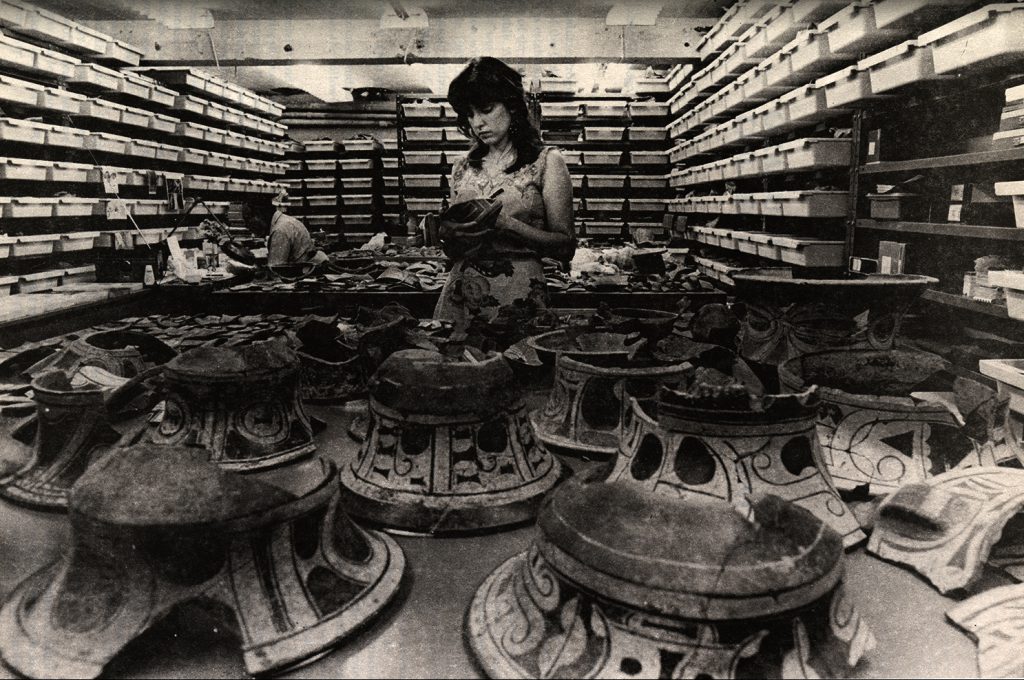Yvonne Narganes Storde and Luis A. Chanlatte Baik in the Archaeological Research Center. Graduate Catalogue, University of Puerto Rico, Rio Piedras Campus (UPR-RP), 1984.
[spacer height=”20px”]
Texto completo / Full text
PDF / ePUB
Title: The Archaeological Research Center
Autor / Author: Yvonne Narganes Storde
Museo de Historia, Antropología y Arte de la Universidad de Puerto Rico
Resumen:A sus 72 años de existencia, el Centro de Investigaciones Arqueológicas ha mantenido su misión de estudiar y defender el patrimonio cultural indígena e histórico de la isla de Puerto Rico. Gracias al esfuerzo de este importante proyecto, dirigido en un inicio por el Dr. Ricardo Alegría y luego por el Dr. Chanlatte Baik, se ha podido reunir la colección arqueológica más grande y valiosa de las Antillas.
Abstract: In its 72 years, the Archaeological Research Center (Centro de Investigaciones Arqueológicas) has consistently carried out its mission of studying and defending Puerto Rico’s Indigenous and historical cultural heritage. It is because of the efforts devoted to this significant project, initially led by Dr. Ricardo Alegría and later by Dr. Chanlatte Baik, that we have been able to assemble the largest and most important archaeological collection in the Caribbean.
Palabras clave: Arqueología, Colecciones, Culturas indígenas, La Hueca, Luquillo, Sorcé, Tecla, ViequesKeywords: Archeology, Collections, Indigenous cultures, La Hueca, Luquillo, Sorcé, Tecla, Vieques
Sección: Inglés / Section: English
Publicado: 11 de abril de 2020.
Cita recomendada: Narganes Storde, Yvonne. “The Archaeological Research Center”, Visión Doble: Revista de Crítica e Historia del Arte, 28 de marzo de 2020, humanidades.uprrp.edu/visióndoble
Translated by the students of the Museum Translation Course, Graduate Program in Translation, University of Puerto Rico, Río Piedras Campus.
Versión en español: El Centro de Investigaciones Arqueológicas

